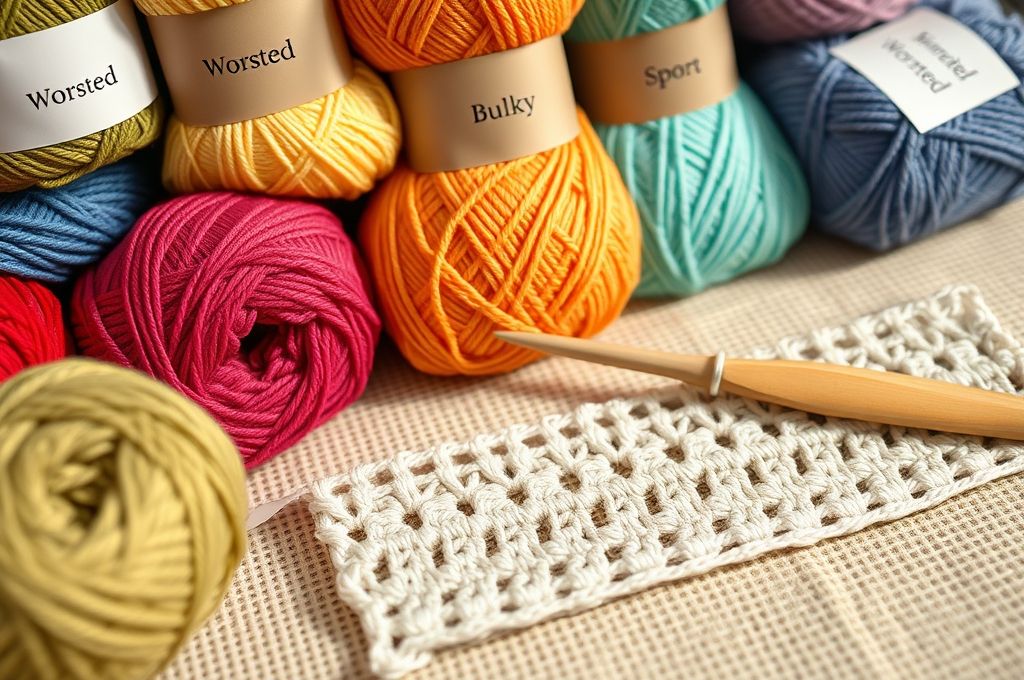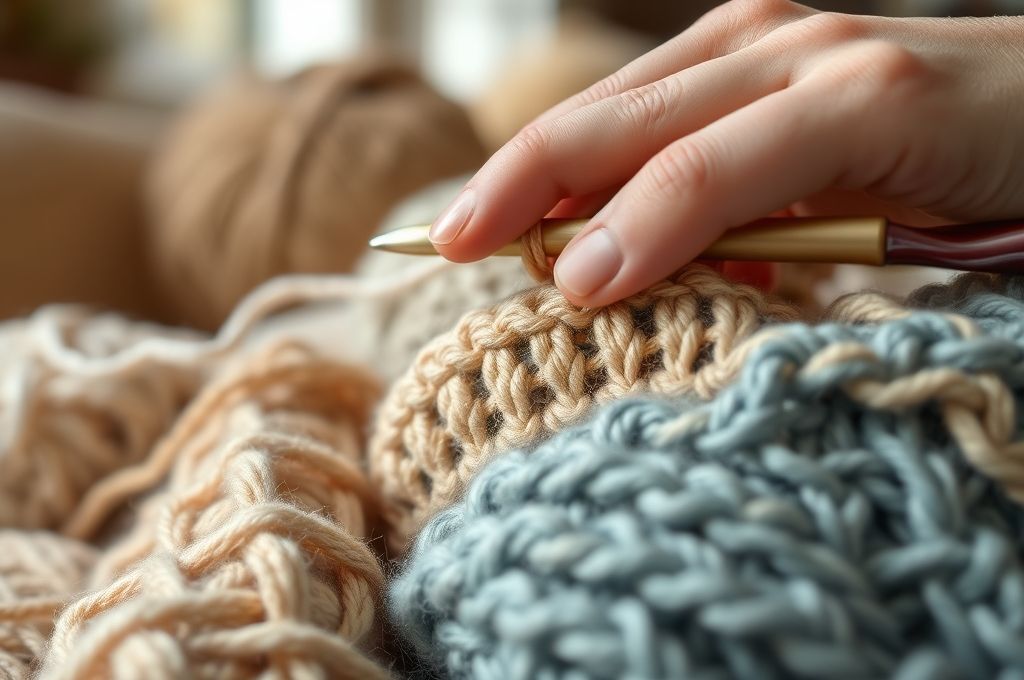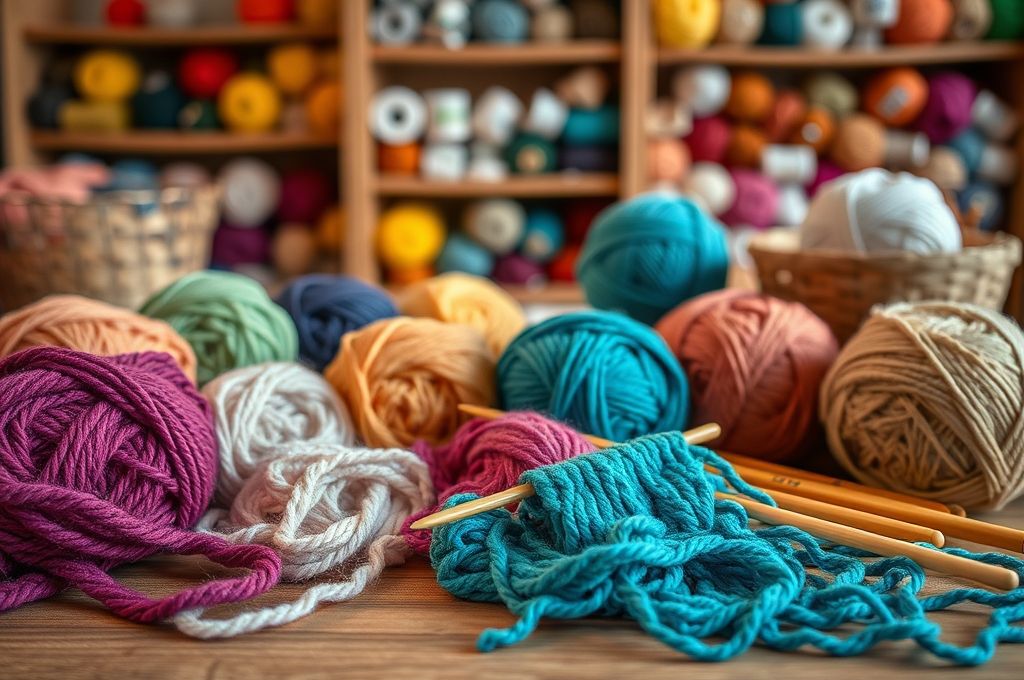Have you ever gotten halfway through a knitting or crochet project only to realize you’re running out of yarn—and your local craft store doesn’t carry the same brand or dye lot? Or maybe you found a beautiful pattern, but the recommended yarn is too expensive or simply unavailable where you live. If so, you’re not alone. Yarn substitutions are one of the most common challenges crafters face, whether you’re a beginner or a seasoned pro. The good news? With the right knowledge, swapping yarns doesn’t have to mean sacrificing quality, fit, or design. In fact, it can open up a world of creative possibilities.
In this guide, we’ll walk you through everything you need to know about yarn substitutions—why they matter, how to choose the right alternative, and what pitfalls to avoid. From understanding fiber content and weight to testing gauge and managing texture differences, we’ve got you covered. You’ll learn practical tips, real-life examples, and expert insights that will help you make confident decisions every time you pick up your needles or hook. Whether you’re adapting a pattern due to budget, availability, or personal preference, this article will empower you to substitute yarns like a pro. Let’s dive in and turn what could be a crafting headache into an opportunity for innovation and creativity.
Why Yarn Substitutions Matter
At first glance, yarn might seem like just another craft supply—something interchangeable, like using any brand of glue in a school project. But in reality, the type of yarn you use can dramatically affect the final outcome of your project. Think of it like baking: swapping whole wheat flour for cake flour might seem minor, but it changes the texture, rise, and overall result. The same goes for yarn.
When a pattern recommends a specific yarn, it’s not just about color or brand loyalty. Designers choose yarns based on fiber content, weight, drape, elasticity, and how it behaves when knitted or crocheted. If you substitute without considering these factors, you might end up with a sweater that’s too stiff, a blanket that pills after one wash, or a hat that stretches out of shape.
But here’s the flip side: substitutions can also be empowering. Maybe the original yarn is discontinued, or you’re allergic to wool. Perhaps you want a vegan option or a more affordable alternative. Yarn substitutions allow you to personalize your projects, adapt to your needs, and even experiment with new textures and colors. They make crafting more accessible and inclusive.
The key is making informed choices. Blindly swapping one yarn for another “because it looks similar” can lead to frustration. But when you understand why substitutions matter—and how to do them correctly—you gain the freedom to craft on your own terms. It’s not about following rules rigidly; it’s about understanding the principles so you can break them wisely.
So, before you grab any skein off the shelf, ask yourself: What am I trying to achieve? Is this substitution going to support my vision, or sabotage it? With that mindset, you’re already one step closer to success.
Understanding Yarn Weight and Gauge

One of the most critical factors in successful yarn substitution is matching the yarn weight and gauge. These two elements work hand-in-hand to determine the size, drape, and fit of your finished piece.
Yarn weight refers to the thickness of the yarn, not how much it weighs on a scale. The Craft Yarn Council has standardized seven main categories, from 0 (Lace) to 7 (Jumbo). Most patterns will specify the recommended weight—like “DK” or “worsted”—so your first step is identifying where your original and substitute yarns fall on this spectrum.
But here’s the catch: not all worsted-weight yarns are created equal. One brand’s “medium” might be slightly thicker or thinner than another’s. That’s where gauge comes in. Gauge measures how many stitches and rows you get per inch when using a specific needle or hook size. For example, a pattern might require 20 stitches and 24 rows over 4 inches in stockinette stitch.
If your substitute yarn doesn’t match the gauge, your project could end up too big, too small, or misshapen. Imagine knitting a sweater that’s supposed to be 40 inches around, but because your gauge is off, it turns out 48 inches—too loose and shapeless.
The solution? Always swatch. Make a small test piece (at least 4×4 inches) using your substitute yarn and the recommended needle or hook size. Measure your stitches and rows. If they don’t match, try adjusting your needle size—going up or down—until you hit the target.
And remember: different fibers behave differently. Cotton is less elastic than wool, so it may require a smaller hook to achieve the same gauge. Acrylic might stretch more over time. These nuances matter.
Bottom line: never skip the swatch. It’s the single best way to ensure your substitution will work—and save you hours of frogging (ripping out your work) later.
Fiber Content: How It Affects Your Project
Beyond weight and gauge, the fiber content of your yarn plays a huge role in how your finished project will look, feel, and last. Substituting a wool yarn with a cotton one might seem like a simple swap, but the results can be surprisingly different.
Let’s break it down. Wool is naturally elastic, warm, and excellent at retaining shape. It’s ideal for garments like sweaters and socks because it can stretch and bounce back. Merino wool is soft and great for next-to-skin wear, while rugged wools like Shetland are perfect for outerwear.
Cotton, on the other hand, is cool, breathable, and heavier than wool. It doesn’t have much elasticity, which means it can stretch out over time—especially in items like cardigans or shawls. That beautiful cotton sweater might look great on day one, but after a few wears, the shoulders could sag.
Then there’s acrylic, a synthetic fiber known for being affordable, durable, and easy to care for. It’s a popular choice for blankets and baby items because it’s machine-washable and hypoallergenic. But it can feel less luxurious and may pill more easily than natural fibers.
Blends—like wool-acrylic or cotton-bamboo—offer a middle ground. A 70% acrylic/30% wool blend might give you warmth and durability without the high cost or itchiness of 100% wool.
So, when substituting, ask:
- Will this fiber keep its shape?
- Is it appropriate for the season or use?
- How will it feel against the skin?
- Can it be washed easily?
For example, using a silky bamboo yarn for baby booties might look elegant, but it could be too slippery and delicate for rough toddler use. Likewise, a scratchy wool might not be the best choice for a scarf meant for a sensitive neck.
Always check the yarn label for fiber content and care instructions. And when in doubt, do a quick test: knit a small swatch, wash it, and see how it holds up. This simple step can prevent disappointment later.
Texture and Drape: Matching the Look and Feel

Even if two yarns are the same weight and fiber content, they can behave very differently based on texture and drape. These qualities influence how your finished piece hangs, moves, and feels to the touch—and they’re often overlooked in substitutions.
Drape refers to how fluidly a fabric falls. A yarn with good drape creates soft, flowing garments—perfect for shawls, dusters, or lightweight tops. A stiff yarn, on the other hand, produces structured pieces, like bags or home decor items.
For example, a laceweight mohair blend will have incredible drape, creating airy, wispy fabrics. Swap it with a worsted-weight cotton, and you’ll end up with something dense and boxy—completely changing the design.
Texture includes things like smoothness, fluffiness, or novelty elements (like bouclé or eyelash yarn). A smooth merino will give you crisp stitch definition, ideal for cables or colorwork. A fuzzy mohair, while dreamy, can obscure intricate patterns.
Imagine following a complex cable pattern with a fluffy yarn—the cables might disappear into the fuzz! Similarly, using a slick silk yarn for a textured basket weave might not show the pattern well.
So, how do you match texture and drape? Start by analyzing the original yarn. Is it smooth or fuzzy? Light and airy or dense and firm? Then, look for a substitute with similar qualities.
Here are a few quick tips:
- For drape: Choose fibers like silk, bamboo, or fine alpaca.
- For structure: Go for cotton, linen, or tightly spun wools.
- For stitch definition: Pick smooth, non-fuzzy yarns.
- For coziness: Try wool blends or brushed acrylics.
And don’t forget to wash and block your swatch. Some yarns change dramatically after washing—cotton softens, wool blooms, and synthetics may stiffen. Seeing how your substitute behaves after care can help you predict the final result.
When you match not just weight and fiber, but also drape and texture, your substitution won’t just work—it’ll shine.
Color and Dye Lot Consistency
You’ve matched the weight, checked the gauge, and love the fiber—but there’s one more hidden trap: color and dye lot consistency.
Have you ever bought two skeins of the same color, only to notice one is slightly darker or has a different undertone? That’s because yarn is dyed in batches, called dye lots. Even within the same brand and color name, slight variations can occur between lots due to differences in water temperature, dye absorption, or production timing.
This becomes a real issue when substituting yarns, especially if you’re combining brands or buying from different sources. A mismatched dye lot can ruin the look of a large project like a blanket or sweater, creating visible stripes or patches.
So, what can you do?
First, always check the dye lot number on the label before buying. If you’re purchasing multiple skeins, make sure they all have the same lot number. If you’re substituting and can’t find the exact same lot, consider buying all new skeins from a single lot of the substitute yarn.
Second, if you’re mixing yarns (like using leftover scraps), alternate skeins every few rows. This technique—called “striping” or “pooling”—helps blend any subtle color differences and prevents sudden shifts.
Third, if you’re worried about color accuracy, buy extra. It’s better to have a little leftover than to run out and be unable to match the color later.
And when it comes to variegated or self-striping yarns, be extra cautious. These are designed to create patterns as you knit, and switching to a different brand—even with similar colors—can result in clashing sequences or unexpected color blocks.
Pro tip: Take your yarns into natural light before committing. Store lighting can distort colors, making two shades look identical when they’re actually quite different.
By paying attention to dye lots and color behavior, you’ll ensure your project looks cohesive and professional from start to finish.
Practical Tips for Successful Substitutions
Now that you understand the key factors—weight, gauge, fiber, texture, and color—let’s put it all together with practical tips you can use today.
- Use a Yarn Calculator: Online tools like the Ravelry Yarn Substitution Tool let you input your original yarn and find alternatives with similar specs. It’s a great starting point, but don’t rely on it blindly—always verify with a swatch.
- Check Yardage: Make sure your substitute has enough yardage per skein. If the original yarn has 200 yards and your substitute only has 150, you’ll need more skeins to complete the project.
- Consider the Project Type: A blanket can be more forgiving than a fitted garment. For accessories like scarves or dishcloths, substitutions are usually low-risk. For sweaters or baby clothes, precision matters more.
- Buy from Reputable Sources: If you’re buying online, read reviews and check photos from other crafters. Ravelry and Etsy are great places to see real-life examples of how a yarn performs.
- Keep a Yarn Journal: Track which substitutions worked (and which didn’t). Note the fiber, gauge, and how the finished piece held up over time. This becomes an invaluable resource for future projects.
- Ask for Help: Local yarn shops (LYS) are goldmines of knowledge. Staff often have hands-on experience with different yarns and can recommend excellent alternatives.
- Don’t Fear Experimentation: Sometimes, the “wrong” yarn creates something unexpectedly beautiful. A chunky cotton in a lace pattern might give you a modern, architectural look. Trust your instincts—but test first.
Remember: substitution isn’t about perfection. It’s about adaptation, creativity, and making crafting work for you.
Common Substitution Mistakes (And How to Avoid Them)
Even experienced crafters make substitution errors. Here are some of the most common—and how to steer clear of them.
Mistake #1: Ignoring Gauge
“I thought it was close enough.”
Reality: Even a half-stitch difference per inch adds up over a sweater. Always swatch and measure.
Mistake #2: Swapping Fiber Without Testing
“I used cotton instead of wool because I’m allergic.”
Good reason—but did you account for the lack of elasticity? Wash the swatch to see how it drapes and stretches.
Mistake #3: Using Multiple Dye Lots Without Planning
“I’ll just buy more when I run out.”
Result: A visible color shift halfway through your blanket. Buy all yarn at once, or alternate skeins.
Mistake #4: Choosing a Novelty Yarn for a Complex Pattern
“I loved the sparkles!”
But sparkly or fuzzy yarns can hide stitch details. Save them for simple patterns or accents.
Mistake #5: Assuming All “Worsted” Yarns Are Equal
They’re not. One worsted might knit at 4.5 stitches per inch, another at 5. Always check the label and swatch.
The best way to avoid these pitfalls? Slow down. Take the time to research, test, and plan. A few extra minutes now can save hours of frustration later.
When Substitutions Lead to Innovation
Here’s a fun truth: some of the most beloved knitting and crochet designs started as happy accidents—yarn substitutions that turned into creative breakthroughs.
Take the rise of vegan yarns, for example. As more crafters sought animal-friendly options, designers began experimenting with bamboo, hemp, and soy-based fibers. These alternatives aren’t just ethical—they bring unique drape, sheen, and softness that wool can’t replicate.
Or consider budget-friendly swaps. A designer might create a sample in luxury merino, but fans discover that an affordable acrylic blend works just as well for everyday wear. This democratizes crafting, making beautiful projects accessible to more people.
Even leftover yarn projects often begin with substitution. You have three skeins of DK weight in different colors—what can you make? A patchwork blanket? A striped shawl? These constraints spark creativity.
So while substitutions are often born from necessity, they can lead to innovation. They push us to think differently, try new combinations, and personalize our craft.
Next time you’re stuck without the “right” yarn, don’t see it as a limitation. See it as an invitation to explore, adapt, and grow.
Final Thoughts: Confidence in Every Stitch
Yarn substitutions don’t have to be stressful. With a little knowledge and preparation, they can become one of your most valuable crafting skills. You’ll gain flexibility, save money, and unlock new creative possibilities.
Remember the essentials: match the weight, check the gauge, consider the fiber, and test for drape and color. Swatch, swatch, swatch. And don’t be afraid to ask for help or experiment.
Most importantly, trust yourself. You know your project, your needs, and your style better than anyone. Whether you’re adapting a pattern for comfort, cost, or conscience, you’re not doing it wrong—you’re making it yours.
So the next time you face a yarn dilemma, take a deep breath, grab your tape measure, and give it a try. You might just surprise yourself with what you create.
Your Turn: Share Your Story!
Have you ever made a yarn substitution that turned out better than expected? Or one that taught you a hard lesson? We’d love to hear about it! Drop a comment below, share a photo of your project, or pass this guide along to a fellow crafter who’s been stuck on a yarn hunt.
Happy stitching—and may your substitutions always be successful!

Daniele Ferreira is passionate about the world of crochet, dedicating her time to exploring techniques, creating unique pieces, and sharing her knowledge with beginners and aficionados alike. With attention to detail and creativity, she transforms yarn into true works of art, inspiring others to discover the beauty and joy of this manual art.







